Sofonisba Anguissola (Cremona, 1532 - Palermo, 1625) was one of the leading Italian women painters of the 16th century. Particularly skilled in portraiture, Anguissola was the first case of a female artist famous not only in Italy but also abroad, as she was a guest for a long time in Madrid at the court of Philip II. A woman with an exceptionally long life for her time (in fact, she lived to be almost a hundred years old), she was also one of the first artists held in high esteem by her contemporaries: a painter in great demand by the most prestigious clients, she was also mentioned in Giorgio Vasari’s Lives , although there is no section devoted to her.
Of noble origins, Sofonisba Anguissola devoted herself to art as an amateur, following one of the few paths that were allowed at the time for women to become artists: usually either they were nobles who devoted themselves to painting for pleasure (although Sofonisba later succeeded in making it a profession), or they were the daughters of artists, or they were nuns who learned to paint in convents. In essence, the context of origin for a woman was decisive.
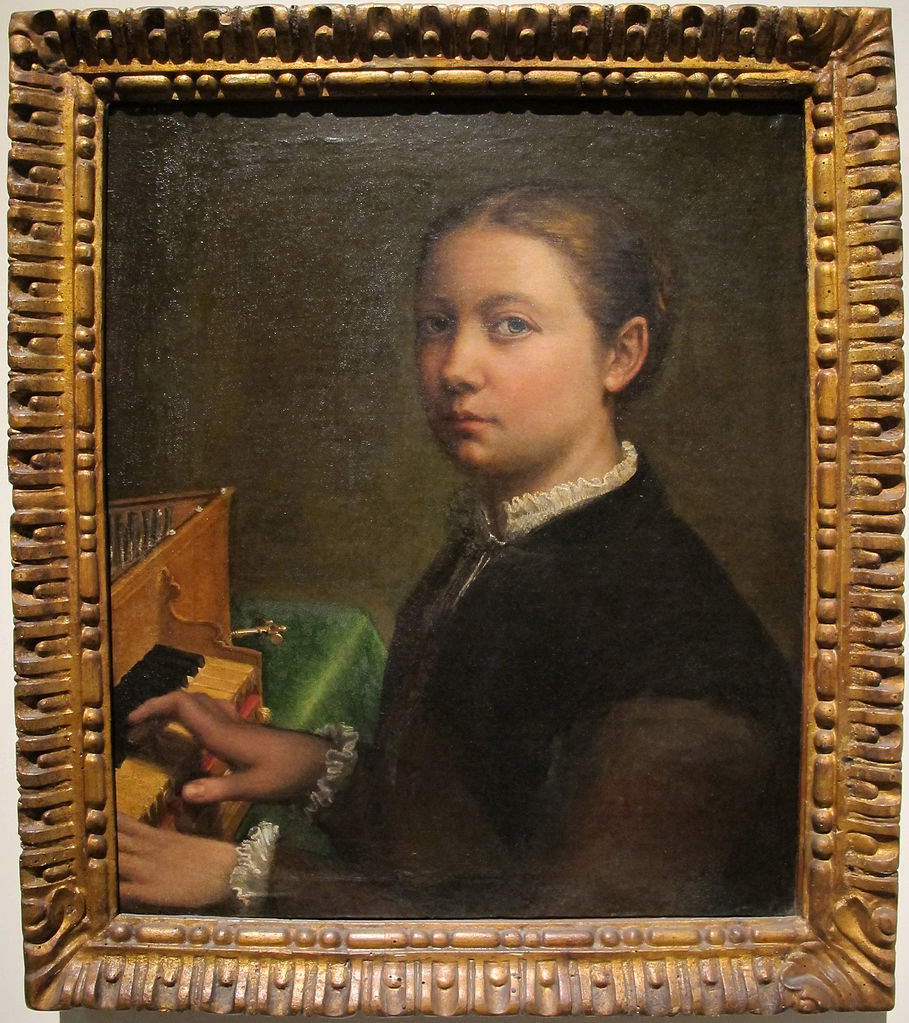
Sofonisba Anguissola was born in Cremona on February 2, 1532, to an aristocratic family of Piacenza origin. Her parents had six daughters (Sofonisba was the eldest) and one son. Her father, Amilcare Anguissola, was well-connected in Cremonese cultural circles and was a great art enthusiast. He worked hard to ensure that his daughters studied literature, music, and painting, and so in addition to Sofonisba, four of his other sisters also became painters. However, not all of them continued their careers or achieved the same fame as Sofonisba. Anguissola did not paint only for pleasure; rather, artistic activity became her profession for all intents and purposes. It is believed that she was probably conditioned in embarking on her career by the family’s precarious economic conditions, and that it was her father himself who made it possible for his daughter to cooperate in making ends meet.
Certainly, her father accompanied her, then 11 years old, and her sister Elena to the workshop of the painter Bernardino Campi, where they stayed for three years. This training was possible for Anguissola precisely because of her father’s intercession, as at the time this privilege was granted only to male artists.Campi was embedded in the Mannerist style in vogue at the time, and Anguissola took its characteristic elements and brought them into portraiture, the genre in which he decided to specialize. In 1549 Anguissola moved to Milan and had Bernardo Gatti (Il “Sojaro”) as his master.
Anguissola’s earliest works are dated to 1551, when he began to paint portraits of family members. Frequently recurring in his works was the figure of his sister Elena, with whom he had taken his first steps in the study of painting but later abandoned it to take the monastic path. Soon Anguissola’s name and skill as a portrait painter spread among artists and patrons, thanks to her father’s intense promotional activity. Even Michelangelo Buonarroti received some of her drawings from Sofonisba’s father and wanted to compliment her. In particular, Michelangelo was positively impressed by a drawing depicting Anguissola’s little brother Asdrubale just bitten by a crab, recognizing the artist’s excellent ability to capture the child’s expression of pain. The same drawing would later prove to be an inspiration for Caravaggio and one of his most famous early paintings, Ragazzo morso da un ramarro (Boy Bitten by a Lizard).
In 1557 she went to Piacenza to make a portrait of the Archdeacon, and here she took miniature painting lessons from Giulio Clovio. He also took her to visit the Convent of San Sisto, where Raphael Sanzio’s famous Sistine Madonna was kept, and Pordenone’s paintings in the Basilica of Santa Maria di Campagna, thus going on to enrich her artistic education. Studies of miniature painting emerge in some of Anguissola’s small-format self-portraits and especially in his meticulous attention to the details of clothing. A year later, in 1558, Sofonisba’s family hosted the artist, but especially historiographer, Giorgio Vasari at their home in Cremona. In his famous anthology of biographies of artists Le vite de’ più eccellenti pittori, scultori, e architettori (The Lives of the Most Excellent Painters, Sculptors, and Architects), Vasari introduces Sofonisba and emphasizes her success at the court of Philip II of Spain. In 1559 the Duke of Alba insisted on Philip II himself to call Sofonisba to court in Madrid as lady-in-waiting to 14-year-old Elizabeth of Valois, his betrothed, so that she could give her painting lessons. Sofonisba left Italy and moved to Spain in 1560. Her skills found wide recognition; in fact, a number of portraits were commissioned for various personalities who gravitated to the court. However, Anguissola was not officially commissioned as a court painter, so it is said that she was rewarded with material gifts such as jewelry and textiles in lieu of concrete financial compensation (according to others, however, her fee was increased considerably).
Meanwhile, Queen Elizabeth of Valois died in 1568, having lost her third daughter in her womb, but Anguissola remained at court for a few more years as lady-in-waiting and portraitist to her other two daughters Isabella and Catherine. It would seem that the Spanish court, which was closely connected to Amilcare Anguissola, who, after all, had served on the Council of Decurions of Cremona (a group of governors who administered the city precisely on behalf of the Spanish sovereign), had participated with a substantial dowry so that the painter would marry by proxy. She was assigned the Sicilian nobleman Fabrizio Moncada, brother of the viceroy of Sicily, and so in 1573 Sofonisba left again to settle in Palermo with her husband. The marriage lasted only a few years, as Fabrizio Moncada was killed during a pirate attack while on his way by sea to the court of Philip II at Capri. Anguissola wished to dedicate to the memory of her husband the painting Madonna dell’Itria, in which the face of the Virgin is a self-portrait of herself and two small boats are depicted as a reminder of the fate suffered by her consort.
The painter left Palermo to return to Cremona, and on the way she met a Genoese nobleman, Orazio Lomellini, a widower with a son. The two married, and Sofonisba moved to Genoa, where she remained for thirty-five years. Here, while she often devoted herself to portraying visiting Spanish nobles, she was urged by the painter Pier Francesco Piola to take inspiration from the Genoese Luca Cambiaso and Bernardo Castello for her art. In 1580 the painter returned to Palermo with her second husband, who had many interests here. Sofonisba continued to paint incessantly, although she began to suffer from a major problem with her eyesight that worsened over time, making it impossible for her to continue painting.
In any case, her fame as a painter always remained very high, even during the last years of her life. She was admired by Antoon Van Dyck, who came in contact with her work when he arrived at the Spanish court to succeed her. The two painters, he in his mid-20s and she now elderly, met in Palermo itself in 1624, and he painted a portrait of her. The following year, in 1625, the now over-90-year-old painter passed away on November 16 and was buried in Palermo, in the church of San Giorgio dei Genovesi. Her experience as an artist paved the way for women painters, until then present in art only as subjects but never as official performers.
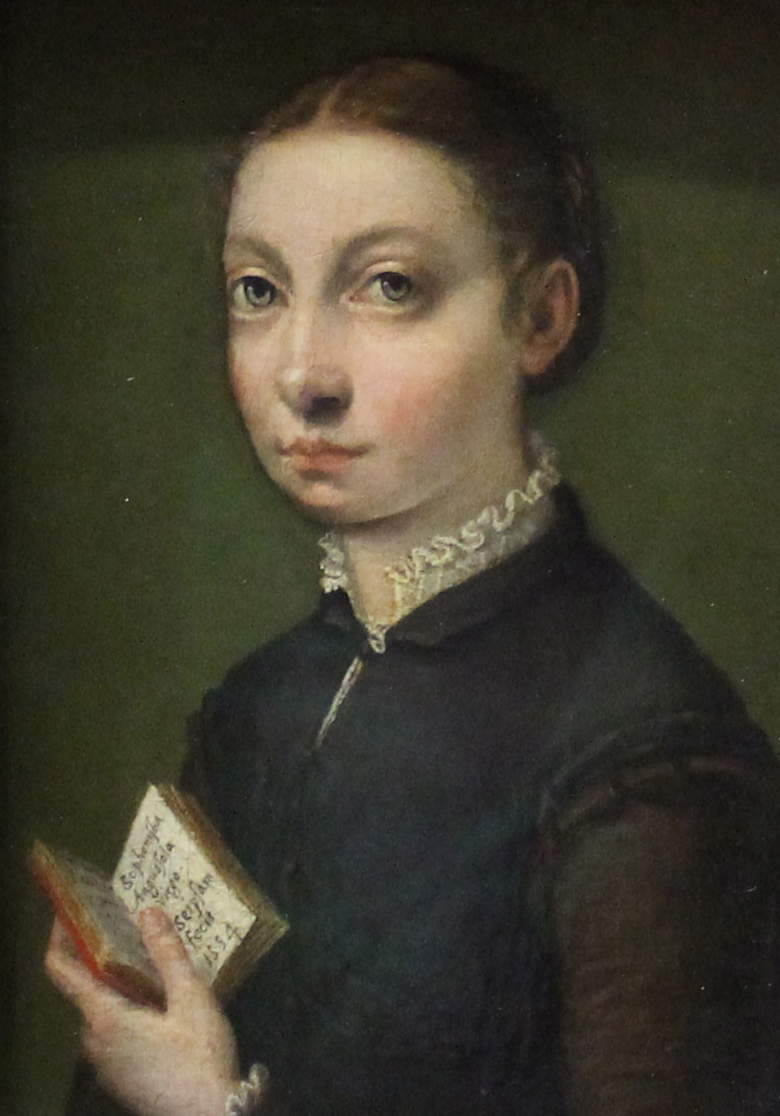
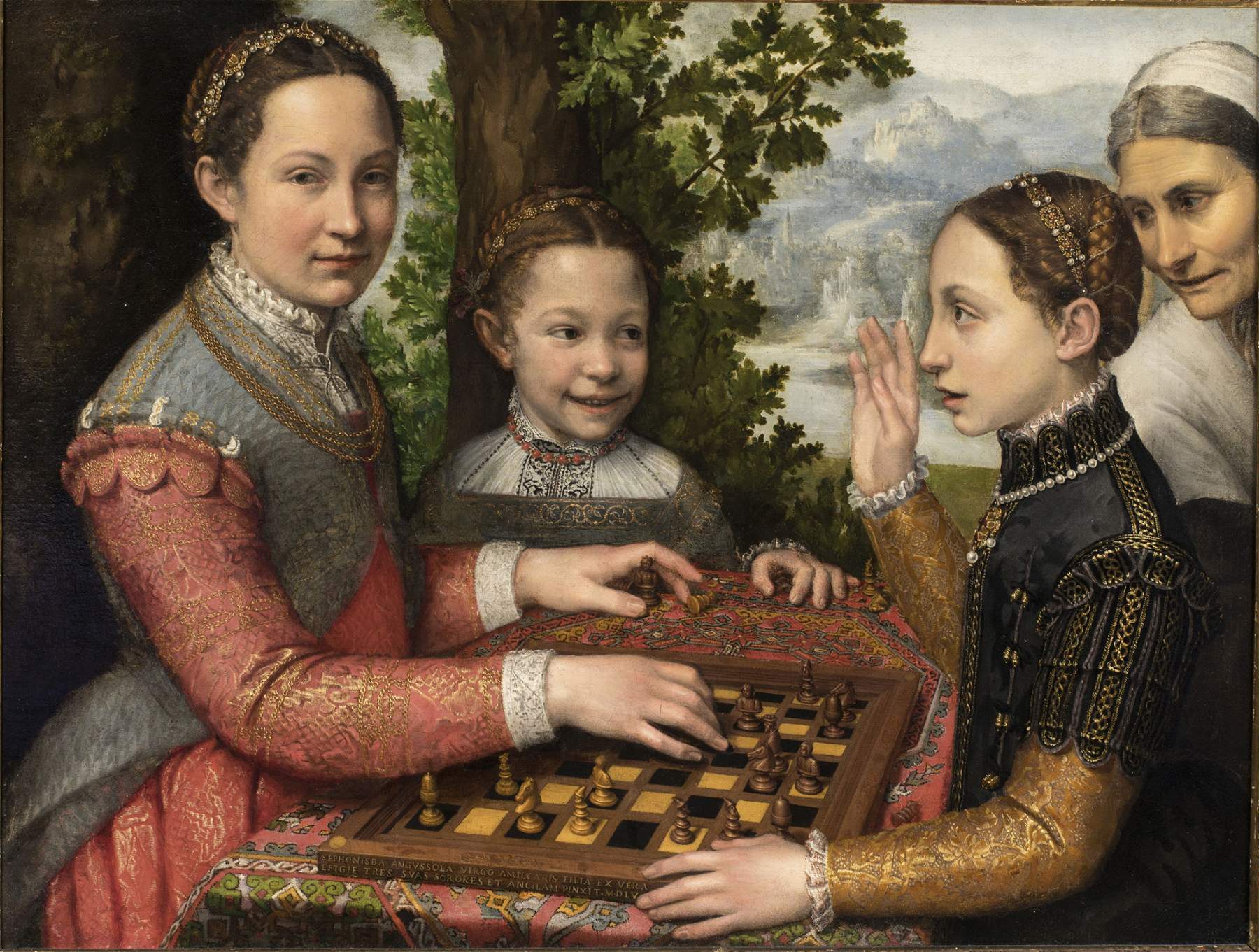
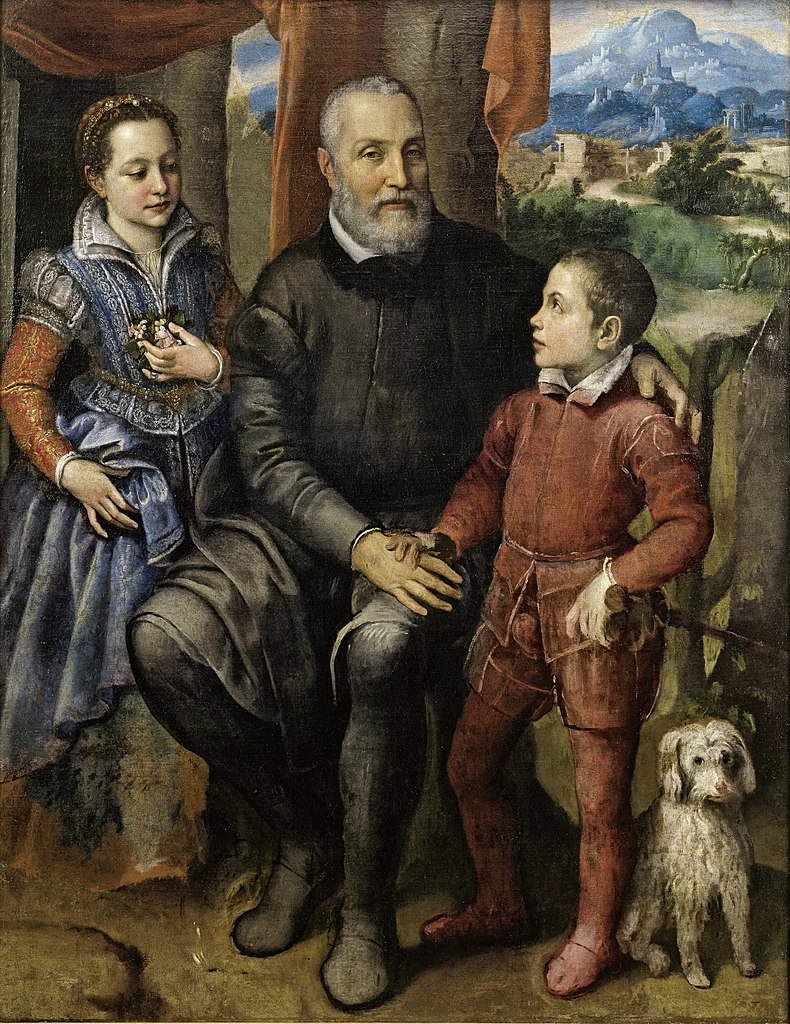
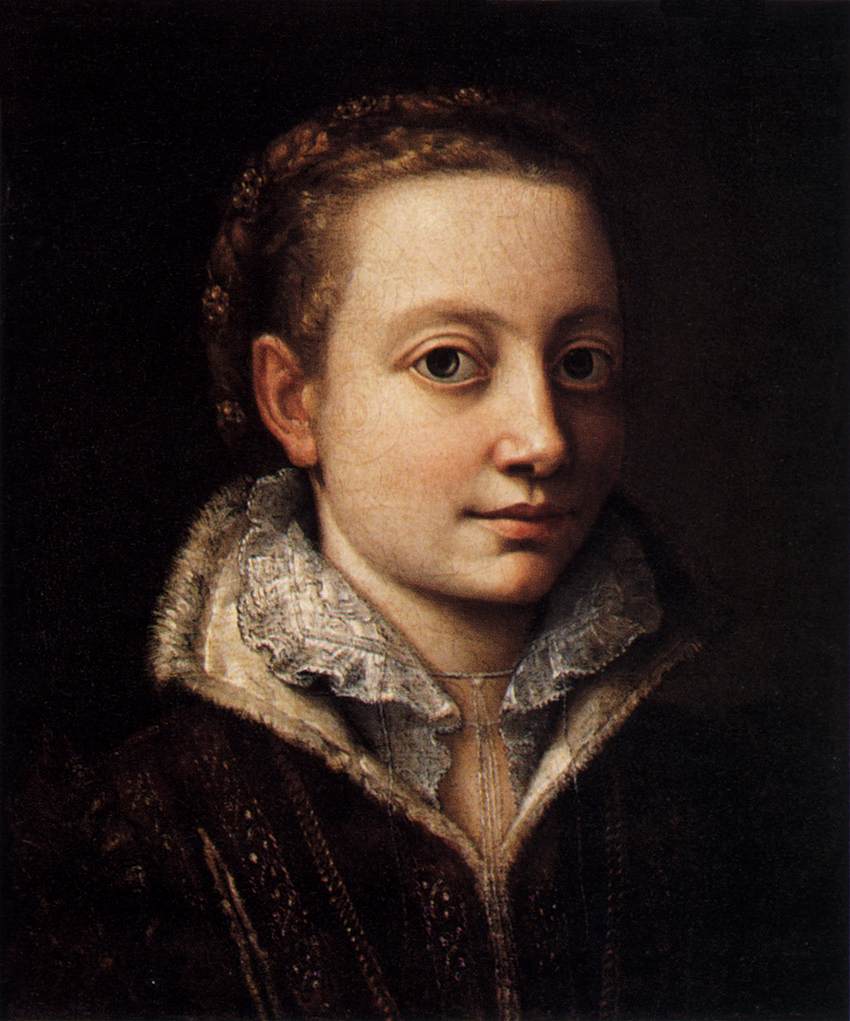

A skilled portraitist, Sofonisba painted numerous self-portraits, as well as commissioned portraits of royal and aristocratic personalities. Anguissola’s portraits are interesting and stand out from other earlier or contemporary examples because of her choice to place her subjects in informal settings composed of very vivid and rich backgrounds and because of the attention the artist paid to the details of the clothes, which were reproduced with painstaking care. It can be said that Sofonisba, therefore, was bringing back to the canvas a glimpse of aristocratic life, and for this she was much appreciated and in demand.
Her self-portraits also became famous, as in painting herself the painter brought back symbols and colors that represented how she saw herself as a woman and as an artist, with direct references to virtue and modesty. See, for example, theSelf-Portrait of 1554, which features a young Sofonisba combed and dressed very soberly, in a dark dress and without wearing any jewelry, confirming the young woman’s morality. She gazes at the viewer while holding a book on which is written “Sofonisba Anguissola Virgo Seipsam Fecit 1554,” or “Sofonisba Anguissola created by the young maiden herself, 1554.” For a long time it was thought that this painting depicted the Spanish infanta Isabella (daughter of Philip II and Elisabeth of Valois), as she was in Vienna and in fact the infanta had married her cousin the Duke of Austria. But the discovery of a letter from Sofonisba’s father addressed to the Duke of Ferrara Ercole d’Este, dated 1556 and citing this painting as a “Self-portrait” has made it possible to re-establish the nature of the figure depicted.
Also of interest is theSelf-Portrait at the spinet, probably also made in 1554 and identical to the previous work in terms of the hairdo and the expression on the girl’s face. Anguissola here shows the achievement of a good mastery of expressiveness and prefers dark tones, not strident but soft. Moreover, the fact that Sofonisba portrays herself while playing the spinet was a way of emphasizing how knowing how to play an instrument was one of the essential aspects of a high-ranking young woman’s education.
A year later, Anguissola painted another work destined to become famous: the Chess Game (1555). It depicts the three sisters, namely Lucia (the eldest, who moves chess while looking at the viewer), Minerva (the teenager in front of her, who argues with her sister about the game), and little Europa (who smiles amused by Minerva’s words). The housekeeper is also present in the scene, and it is possible to notice some precise differentiations that make the sisters stand apart from her. In fact, the sisters are dressed in elegant clothes, while the housekeeper comes across as more humble, and her face is decidedly older. In the landscape behind them, colored in bright blue (this tendency derives from a probable Flemish influence), there is an oak tree, a symbol of the solidity of family relationships.
Also of similar setting is The Portrait of the Anguissola Family (1557-58) in which the father Amilcare, sister Minerva and little brother Asdrubale are portrayed. It is defined as one of Sophonisba’s most renowned works, but also among the most complex because of the format and setting of the scene, which is very articulate for such a small space. In the foreground are depicted the father and little Asdrubale, who is the last son and the only male, and as such is the object of protection and affection. Therefore, Amilcare Anguissola is portrayed in the act of embracing him. Behind them, Minerva, the sister already featured in Chess Game, also appears, seeming to join them. Also present with them is a dog, a historic symbol of fidelity. The space in which the figures move is punctuated by three tree trunks tied by a red cloth, one of which is broken, as a reminder that life is short, and in the background an elaborate landscape is reproduced in full keeping with the Chess Game.
A full expression of Anguissola’s attention to detail is certainly the Presumed Portrait of his sister Minerva (c. 1560), presumed as it may be another self-portrait. Here the artist concentrates very extensively on the details of the robes and lace, demonstrating the application of the miniaturist studies carried out with Giulio Clovio. In reference to portraits of important European personalities and royalty, reference can certainly be made to the Portrait of Elizabeth of Valois (1561 - 1565). There are several interesting details in this painting, from the ring with a miniature portrait of Philip II, a precious object that was given in the Renaissance to young brides, to the black color of the clothes that was strongly desired by Philip II to emphasize the austerity that prevailed at court. Anguissola gave the queen, albeit at a very young age, an aura of strength and confidence.
The same position of the body and arms, as well as similar clothing and jewelry, can be found in Sofonisba’s portrait of Elizabeth’s daughter,Infanta Elisabeth Clara Eugenia (1599). Finally, the Portrait of Maximilian II Stampa (1588) is noteworthy. Here everything is artificial and unusual: the protagonist would be nine years old, but he is portrayed in an adult position, leaning against a column. He wears black clothes, almost certainly manifesting mourning for the death of his father Hermes a year earlier, and even his facial expression is affected by the sad event. In fact, the child’s averted eyes and rigid posture suggest how he suddenly found himself handling responsibilities far greater than himself. This was one of the first prestigious commissions obtained by Anguissola.
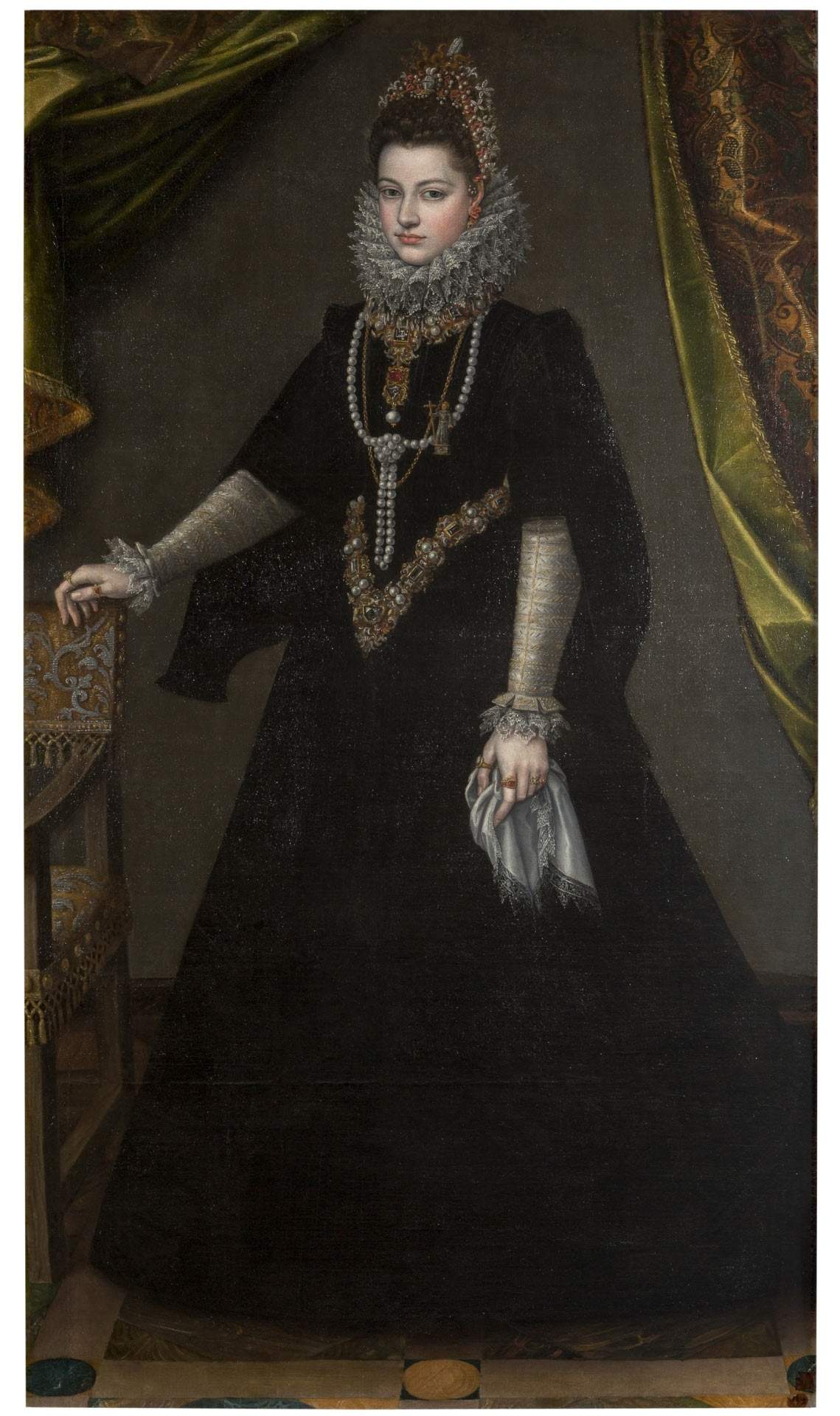
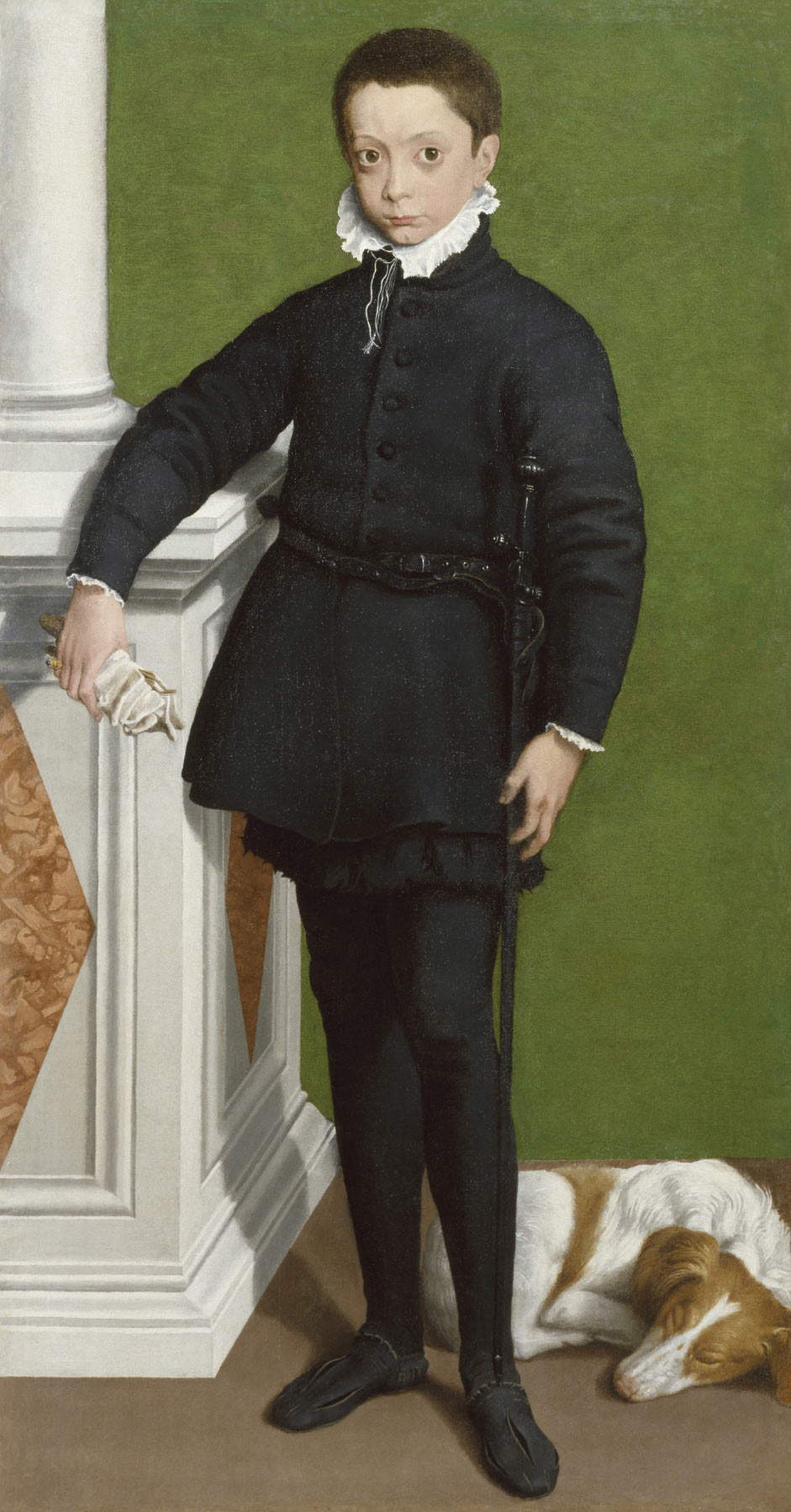
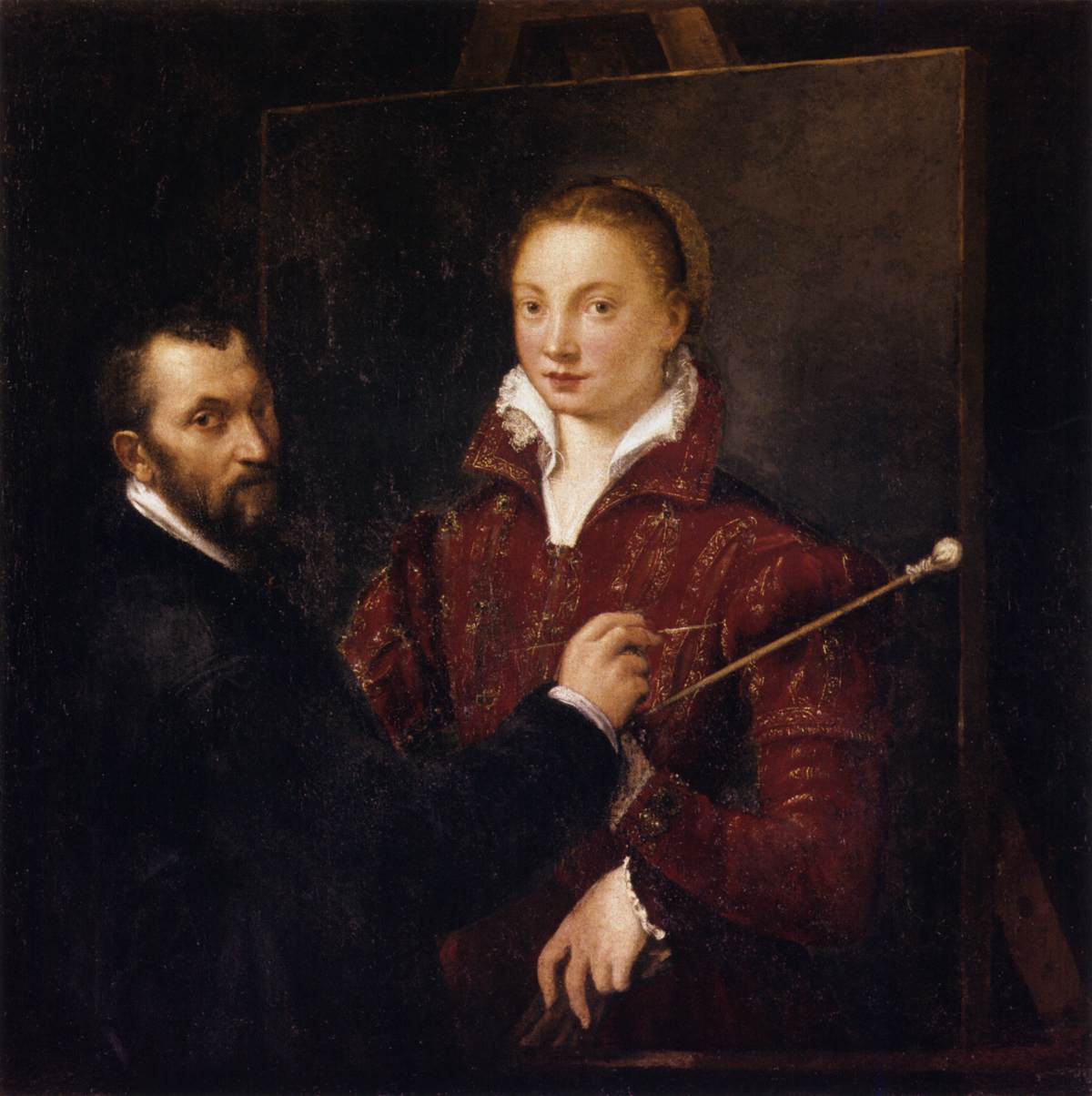
At least a dozen works by the Italian painter are preserved in various Italian museums in the north, south and center. These include theSelf-Portrait (1552-1553) at the Uffizi Gallery in Florence,Self-Portrait at the Spinet (1554-55) in the Capodimonte Museum in Naples, Holy Family (1559) at the Accademia Carrara in Bergamo, Bernardino Campi portraits of Sofonisba Anguissola (1559), at the Pinacoteca Nazionale in Siena, Self-Portrait (1560-61) in the Pinacoteca di Brera in Milan, and other portraits.
The Kunsthistorisches Museum in Vienna holds some famous works such as theSelf-Portrait of 1554 and the Portrait of Elisabeth of Valois (1559). The Prado Museum in Madrid holds a number of portraits of the royal family , including Anne of Habsburg (1573) and King Philip II of Spain himself (1565). Other paintings by Sofonisba Anguissola can be found in Europe in Poznan, Poland, where it is possible to admire Game of Chess (1555), in Germany, where the Portrait of Bianca Ponzoni Anguissola (1557) is located, in Denmark, in Niva, where the preserved the Portrait of the Anguissola Family (1557-1558), in France, where the Portrait of the Infanta Isabella Clara Eugenia (1599) is kept at the Spanish Embassy. In the United Kingdom one can see the Portrait of Alessandro Farnese (c. 1560) in Dublin at the National Gallery, and the first work attributed to Sophonisba, Portrait of Elena Anguissola (or Portrait of a Nun) (1551). Finally, a number of paintings can be found in the United States, including the most famous Self-Portrait in Miniature (c. 1556) at the Museum of Fine Arts in Boston, Portrait of Maximilian II Stampa (1557) in the Walters Art Museum in Baltimore.
 |
| Sofonisba Anguissola, life and works of the great sixteenth-century painter |
Warning: the translation into English of the original Italian article was created using automatic tools. We undertake to review all articles, but we do not guarantee the total absence of inaccuracies in the translation due to the program. You can find the original by clicking on the ITA button. If you find any mistake,please contact us.